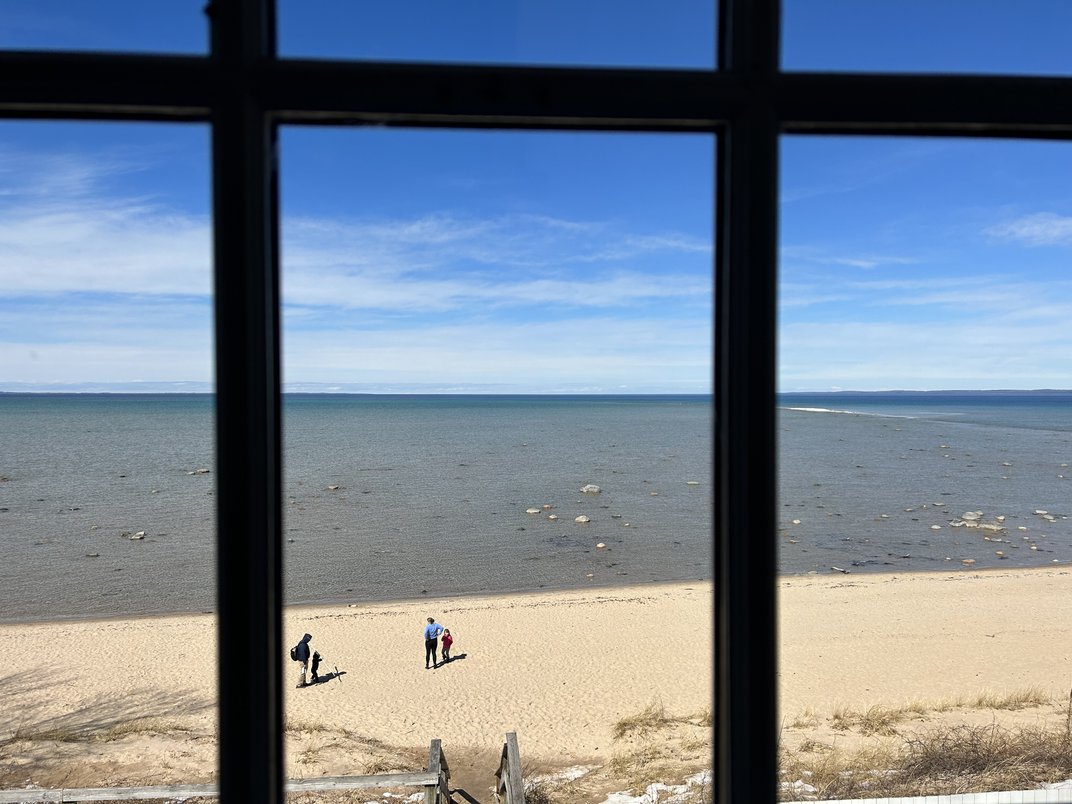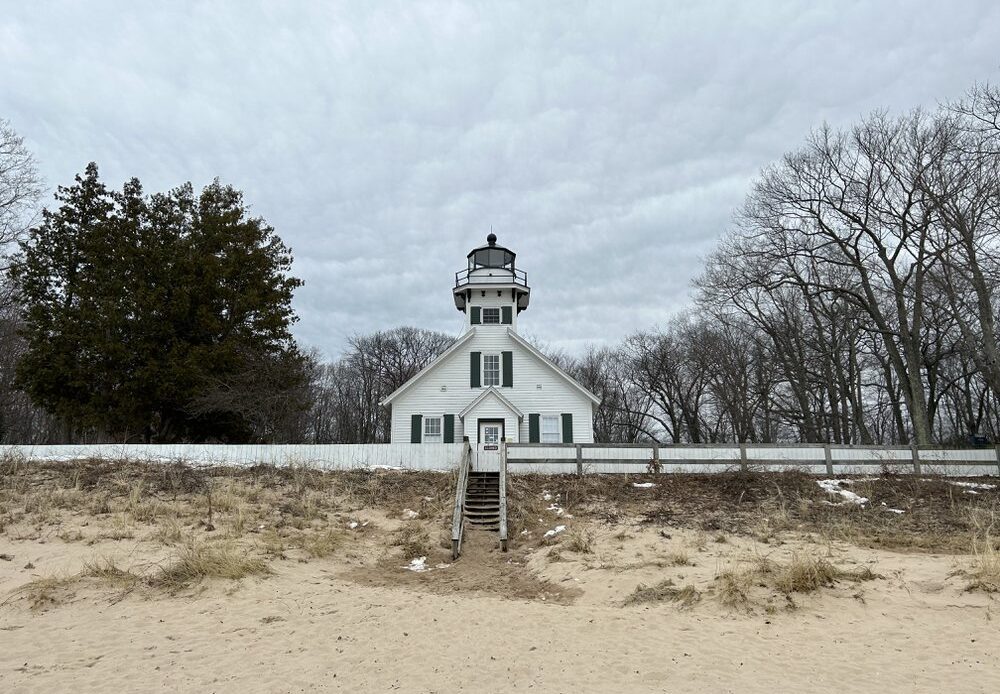Michigan’s Mission Point Lighthouse is perched on the tip of Old Mission Peninsula 17 miles north of Traverse City.
Laura Kiniry
Looking out over the west arm of Grand Traverse Bay, a part of Lake Michigan, I felt a sense of calm. Strange really, since these cold, deep waters are home to dozens of well-preserved shipwrecks, vessels from the late 1800s and early 1900s that became the victims of unpredictable storms while shipping lumber and other maritime commerce. Yet I felt secure standing beside the fifth-order Fresnel lens, a beacon that once shone up to 13 miles from the lantern deck atop Mission Point Lighthouse, lighting the way for many lost sailors.
“I call it catching the lighthouse bug,” says Jeremy D’Entremont, historian for the United States Lighthouse Society, referring to the reasons millions of people visit U.S. lighthouses annually. (North Carolina’s Cape Hatteras Lighthouse alone has approximately 500,000 visitors per year.) “Lighthouses were built for nothing but altruistic reasons, helping to aid navigation and to save lives and property. They’ve got hundreds of years of history, and they tend to exist in some really beautiful and dramatic places.”
No wonder U.S. lighthouses that offer “volunteer keeper” programs tend to get booked up months, if not years, in advance.
There are just under 800 lighthouses currently standing in the U.S., a number that can slightly fluctuate depending on a person’s definition of “lighthouse.” (Some counts include unofficial lights, meaning they’ve never been listed as Coast Guard navigational aids and are more like sculptural pieces, such as the Robert Manning Memorial Lighthouse in Empire, Michigan.) According to D’Entremont, about half of these lighthouses are active. In many cases, the Coast Guard maintains the lights but doesn’t have a budget to care for the structures, so local nonprofits, federal agencies like the National Park Service or private citizens step up to purchase or manage them. This often includes bringing on volunteers to help with the upkeep, greet visitors and even stay overnight—all opportunities that drew me to Michigan’s Mission Point Lighthouse, perched on the tip of Old Mission Peninsula 17 miles north of Traverse City, for two days in April.
Outside the Mission Point…
Click Here to Read the Full Original Article at Travel | smithsonianmag.com…
